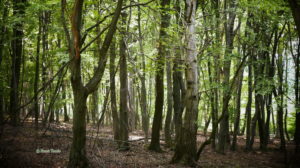General description of project area
Name of the project area: Mátraszentimre-Fallóskút
Surface area (ha): 48.220
EU protection status SPA: NATURA 2000 Code HUBN10006
EU protection status SCI: NATURA 2000 Code HUBN20049
Other protection status according to national or regional legislation: Mátra Landscape Protection Area, partly stricktly protected
The main uses of the project site: The main land uses: Nature Conservation 60%, forestry 30%, forestry 10%
The ownership status: State property 100%

Scientific description of project area
The area is located 620-710 m a.s.l. on acrisoil on andesite bedrock. The annual rainfall is about 650- 800 mm. It is covered with natural forests of 91G0*Pannonic woods with Quercus petraea and Carpinus etulus (59%), 91H0*Pannonian woods with Quercus pubescens (27%), 91M0 Pannonian-Balkanic turkey oak –sessile oak forests and some regenerated forests on abandoned woody meadows (10%). The landscape around it comprises forests, maintained and abandoned grasslands. The clearings of the forests are covered with 6240*Sub-Pannonic steppic grasslands (0,14%) including Echium russicum, Pulsatilla grandis, Thlaspi jankae, Cirsium pannonicum, Crepis praemorsa, Galanthus nivalis, Iris graminea, Iris variegata, Potentilla rupestris. Other habitat types are covering about 4%.
Animals of the area:
- Mammals: Felis sylvestris, Myotis dasycneme, Myotis myotis, Rhinolophus hipposideros.
- Birds: Columba oenas, Caprimulgus europaeus, Dryocopus martius, Dendrocopos medius, Ficedula albicollis, Lanius collurio, Picus canus, Pernis apivorus, Strix uralensis
- Reptiles: Lacerta viridis
- Amphibians: Salamandra salamandra
- Beetles: Cerambyx cerdo, Lucanus cervus and Ropalopus spinicorni.
- Butterflies: Callimorpha quadripunctaria, Dioszeghyana schmidtii
Importance of the project area for biodiversity and/or for the conservation of the species /habitat types targeted at regional, national and EU level
The project site is extremely rich in habitats, flora and fauna in good natural condition. There are occurrences of several species rare in the country and internationally. The different oak forest stands (91G0, 91H0, 91M0,) are very important habitats for several strictly protected species listed in the scientific description part, hence a proper nature conservation management of the oak forests is required. The age, stand structure, composition, mixture rate and dead wood of Pannonic woods with Quercus petraea and Carpinus betulus, Pannonian woods with Quercus pubescens and Pannonian- Balkanic turkey oak – sessile oak forests of the area, the presence of Sub-Pannonic steppic grasslands makes the area important from biodiversity and EU point of view. The naturalness and biological diversity of the area can be relatively quickly improved by a proper nature conservation management.
Flagship species in project area
Iris variegata, Zamenis longissimus, Strix uralensis